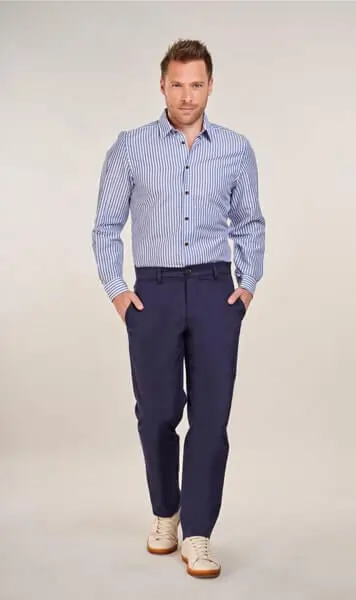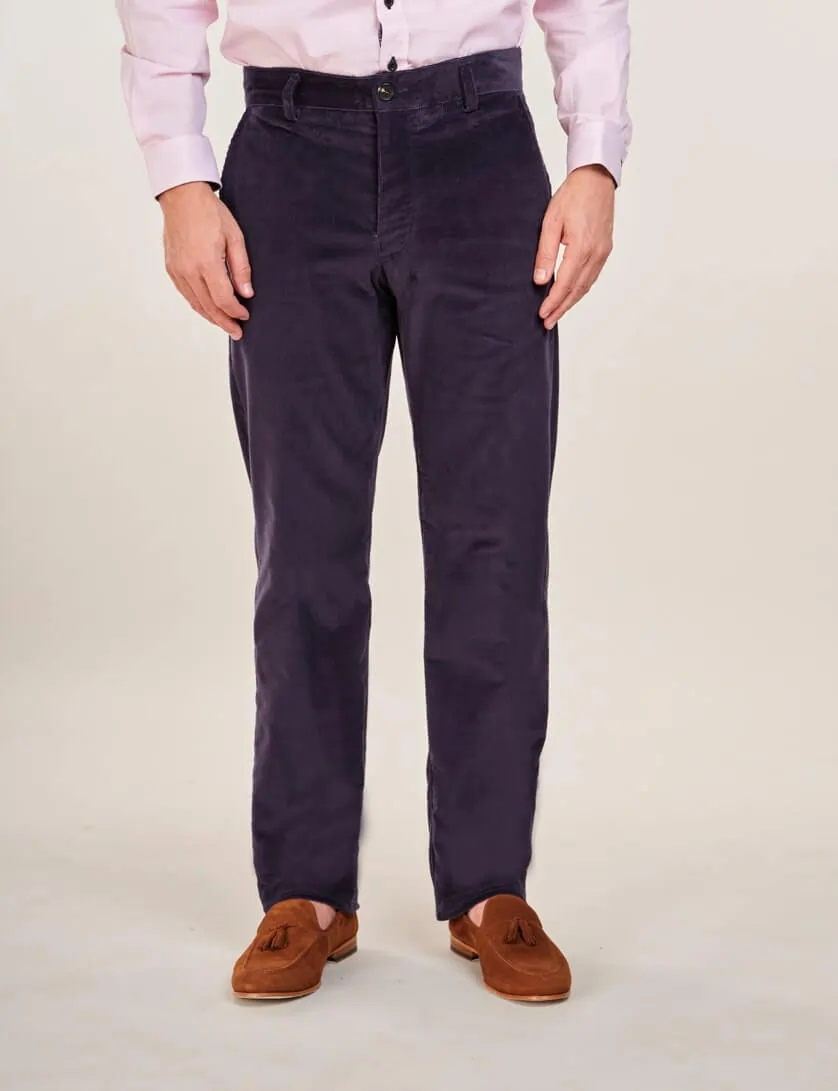Journey of Jeans
Journey of Jeans
Most people own at least one pair of jeans. Many have several pairs in their wardrobe or are constantly changing them. From their humble beginnings to the height of fashion they have become the most popular garment in the world and makes up a staggering one eight of the worlds clothing. Whilst styles may change from skinny to flared to ripped, their popularity goes unchecked. However few people pulling on a pair of jeans gives any thought to how they are made, where they are made and the impact their production has on the environment and those that make them. Here we give an insight into the steps involved in their production followed by the issues associated with these processes. Alongside this we provide some history and changes being made to the established processes to mitigate their undesirable impacts.The stages involved in the production and journey of Jeans
Cotton: Where the jeans journey begins
Cotton cultivation, while providing the raw material for denim, has an ecological cost. The reliance on pesticides and water-intensive farming practices is detrimental to the environment. It's a compelling reason to consider alternatives like organic cotton, which, although slightly more expensive, is a greener choice for denim. Whilst cotton growing has a very chequered history it continues to be a very popular fibre and the one that jeans are made from. It is the most widespread non food crop in the world.
Yarn Production : Spinning
Cotton fibre is turned into yarns using a process called spinning. The process strands of cotton fibres are twisted together and the resulting yarn passes through rings on a spinning frame.
Dyeing
The classic colour for denim is indigo.The Blue Elixir Indigo, synonymous with the classic blue hue of denim, is one of the oldest dyes used in textile dyeing. This organic dye with its distinctive blue shade originated in India during the Greco-Roman era. It was derived from the leaves of specific plants, a process that made blue dyes rare and economically significant. The arrival of Vasco da Gama's sea route to India in 1497 opened up European markets to indigo, and its usage in clothing manufacture began to rise significantly.
In the late 19th century, a German chemist named Adolf von Baeyer succeeded in synthesising natural indigo. This groundbreaking achievement led to the first industrial mass production of synthetic indigo in 1897. The synthetic indigo not only proved to be more cost-effective but also offered superior colour fastness and durability. For industrial scale indigo dyeing yarns are bundled in ropes or spread out as sheets and run through several dye baths. Traditionally this process was done by hand and the process caused environmental damage and caused health problems with workers.
Fabric Weaving
Weaving is a method of textile production in which two sets of yarns or threads are interlaced at right angles to form a fabric or cloth. The vertical thread is called the warp and the horizontal yarn is called the warp. By changing the ratios of these yarns different fabrics can be made with changing characteristics. Denim fabric is known as a twill weave with its own particular ratio of warp and weft yarns.
Jeans manufacture
Jeans manufacture sites take in the fabric and produce finished pairs of jeans ready for sending out. Often these sites fall far short of safe and acceptable standards and workers are often badly treated. It is a labour intensive process most often carried out by skilled workers operating sewing machines.
Transport involved in The Supply Chain
Whilst we are talking about journeys here we should not forget the transport aspect of production. With production often sited a long way from end customers to avoid costs, transport is extensive and has its own impact on the environment
Landfill
Sadly this is where most jeans end up. Considering the scale of the market it is significant. There are other things that can be done to mitigate against at least some of this waste.
Unveiling the True Journey and impact of Making a Pair of Jeans using these processes
The popularity of denim is often shadowed by its significant environmental footprint. The steps we have highlighted come with their own consequences and the facts and figures paint a stark picture of many of the processes involved in the production of a pair of jeans.
Driven primarily by affordability, a large proportion often jeans are outsourced to poor countries where costs are low and workers are often exploited. The environmental aspects are only part of the story in the journey of jeans from cradle to grave. The workers involved in the supply chain from making fabric to garments are often poor and suffer poor work practices. When considering the whole journey there must be consideration given to this aspect. Yes of course the environmental damage is huge but sorting this alone only solves part of the less satisfactory aspects of supplying jeans to the world's markets where demand is insatiable. There have been a number of events that underscore the human cost of the fashion industry. The tragic Rana Plaza factory collapse in Bangladesh, where over 1,100 lives were lost, stands as a stark reminder of the urgency in improving worker conditions and safety standards.
In conventional denim production, an astounding number of litres of water are squandered in the process – from washing and dyeing to finishing the denim fabric. On average, it takes approximately 8,000 gallons of water to produce a single pair of traditional denim jeans. This jaw-dropping statistic vividly illustrates the excessive use of water that accompanies denim production.
But the environmental concerns don't stop at the ecological cost of cotton and the water consumption. The chemicals employed in the dyeing process,particularly in processes like indigo dyeing also pose a threat to the environment and are harmful to workers in the industry.
The problem with denim doesn't end there; research shows that, on average, each person owns seven pairs of jeans! While this might seem like a harmless fact, it holds profound societal and environmental implications. Our insatiable demand for cheap, disposable fashion fuels the "fast fashion" cycle, contributing to textile waste and the environmental strain.
History of Denim and the rise of Jeans
The Origin of Denim - A Matter of Debate
The exact birthplace of denim remains a subject of historical debate, with theories that point to different parts of the world. One widely held view, however, suggests that denim's story began in Nîmes, France. In a twist of fate, fabric weavers in Nîmes, while attempting to replicate a durable cotton fabric known as 'jeane' from Genoa, Italy, unintentionally gave birth to a unique and sturdy fabric. This fabric, made using a twill weave and dyed with indigo, became known as "Serge de Nîmes" (or "twill of Nîmes").
Levi's - The Pioneer of Jeans
The name Levi's is synonymous with denim jeans, but the brand's history is rooted in the vision of Levi Strauss. A German immigrant, Levi Strauss arrived in the United States during the 1853 California Gold Rush to establish a Western branch of his family's dry goods business. His initial move to New York in 1851 was to work alongside his brother.
Levi's product offerings included a robust cotton fabric, denim, which played a crucial role in the brand's history. One of Levi's customers, a tailor named Jacob W. Davis, was using Levi's denim to create durable items such as tents, horse blankets, and wagon covers. Commissioned by a gold mining company to design strong and rugged trousers, Davis reinforced the denim workwear with metal rivets to enhance its strength and durability.
The introduction of these metal rivets led to a partnership between Levi Strauss and Jacob W. Davis. On May 20, 1873, they received U.S. Patent 139,121 for this innovative development. The patented rivet design eventually became a hallmark of Levi's jeans, marking the birth of a legendary pair of trousers.
Denim's Ascent in the 20th Century
The early 20th century saw denim emerge as the preferred workwear fabric for cowboys, miners, and farmers in the United States. This transition was driven by its affordability, durability, and the addition of metal rivets, which made it highly practical for labourers. Denim had firmly established itself as an essential part of the American West's identity.The 1950s marked a turning point for denim as it transitioned from practical workwear to a symbol of rebellion and counterculture. The younger generation began adopting jeans as a form of protest against the Vietnam War and the establishment's formality. In response, many American schools banned denim, further fueling its popularity.
Icons such as James Dean and Marlon Brando redefined jeans' image through their roles in films like 'The Wild One' and 'Rebel without a Cause.' Denim quickly became associated with rebellion, and its adoption by youthful protestors further solidified its status as a symbol of youth culture.
The 1960s and 1970s witnessed denim becoming an emblem of self-expression. Students donned jeans on college campuses, women embraced a wave of sexual liberation by choosing bolder styles, and customising jeans through embroidery and decoration became a way of embracing individuality.
The 1980s heralded the era of designer denim, with fashion houses like Calvin Klein and Armani introducing high-end jeans. This period also saw the introduction of skinny jeans and stretch denim, revolutionising the comfort and fit of jeans.
In the 1990s, baggy jeans and dungarees became the trend, with pop groups like TLC and Destiny's Child contributing to their popularity. Oversized denim jackets paired with jeans of a different indigo shade became a signature look. One eight of all clothing around the world is jeans.
The Global Reach of Jeans
Denim's popularity extended beyond American borders, as American servicemen stationed in Europe and Japan often wore jeans when off-duty. Denim jeans became a cultural symbol, showcasing a carefree way of life that many longed for, especially after the hardships of World War II.
The 21st Century and Beyond - A Continued Evolution of Jeans
The 2000s saw a trend in customised denim, as wearers sought to express their individuality through ripped, embroidered, and personalised jeans. High-rise styles made way for low-rise ultra-skinny models, as fashion icons like Paris Hilton, Nicole Richie, and Jarvis Cocker embraced the trend.
The current decade continues to celebrate denim's timeless DNA, with a resurgence of every imaginable denim style, cut, and wash. Raw selvedge denim has made a comeback, along with lighter, environmentally friendly denim produced using sustainable technologies. Workwear and utility-inspired styles are once again on-trend, with brands like Jack & Jones leading the charge. The demand for jeans never subsides so sorting out its poor environmental profile is vital.
Jeans: The Key to Sustainable Fashion
Sustainable fashion means different things to different people. In many ways it is a complete contradiction, with the very definition of fashion being incompatible with sustainability. It means constant change and discarding previous garments not because they are worn but because they are not in fashion. This drives a greater demand, greater production and with it comes greater waste. Sustainability on the other hand relies on getting a great deal of use from the same garment and not bowing to fast fashion changes. The key is to source material that can be regenerated and use processing with minimal environmental impact. This is then used to make quality long lasting classic garments that never go out of fashion in an environment where workers are properly respected. This is as relevant to jeans as any other garment, in fact particularly so considering the scale of the jeans market worldwide.
Improving Denim Production methods
The denim industry is trying to clean up its act and minimise its environmental impact. For instance, water-saving technologies have become a driving force of change, significantly reducing the colossal water footprint previously associated with denim production. These innovations can cut water usage by up to 90%, transforming an industry renowned for its water-intensiveness.
Companies are pioneering these innovations, driven by the recognition of the environmental consequences and ethical responsibility in countries where most denim production occurs. These advancements symbolise a profound commitment to reducing the ecological impact and improving the lives of factory workers..
Brands Leading the Way with Eco-Friendly Practices
Several brands have embraced the mission of producing sustainable denim, paving the path for change in the industry. These forward-thinking brands are committed to creating quality denim while minimising the ecological footprint. They prioritise fair treatment of workers and eco-friendly materials and processes These are the brands that consumers should be encouraged to follow. A customary search followed by some more detailed research will reveal who they are.
Conclusion
In a world increasingly concerned about the environmental footprint of the fashion industry, the need for more sustainable jeans has never been more evident. Traditional denim production, with its excessive water usage, chemical pollutants, and energy consumption, has contributed significantly to environmental degradation.
As the perils of climate change loom larger, it is imperative to embrace eco-friendly practices in the denim journey, and offer jeans that align with the principles of sustainability.
Alongside this the manufacture of the finished product must happen in a safe environment by properly protected workers. Given the scale of production and where it has generally been placed to cut costs this is a big ask, but customers can help drive this by always reading the labels to check origin and following those brands known to be active in sustainable fashion.
We need to educate consumers and rationalise their purchases so that wastage is kept to a minimum. Take sizing more seriously and don't just use online ordering to have several sizes delivered and send most if not all of them back. The impact of this in transport terms and in wastage of unwanted and unnecessary production is huge. Many online clothing companies have returns departments as big as sales. If you can find a brand that makes to order to your own size it is the best approach.
Lastly, don't just throw away old jeans when you are done with them. Upcycle them alongside other clothes or take them to charity shops and recycle rather than effectively consigning them to landfill.




